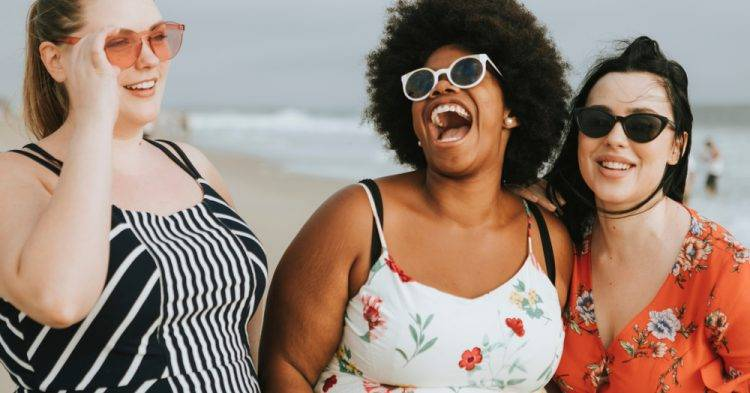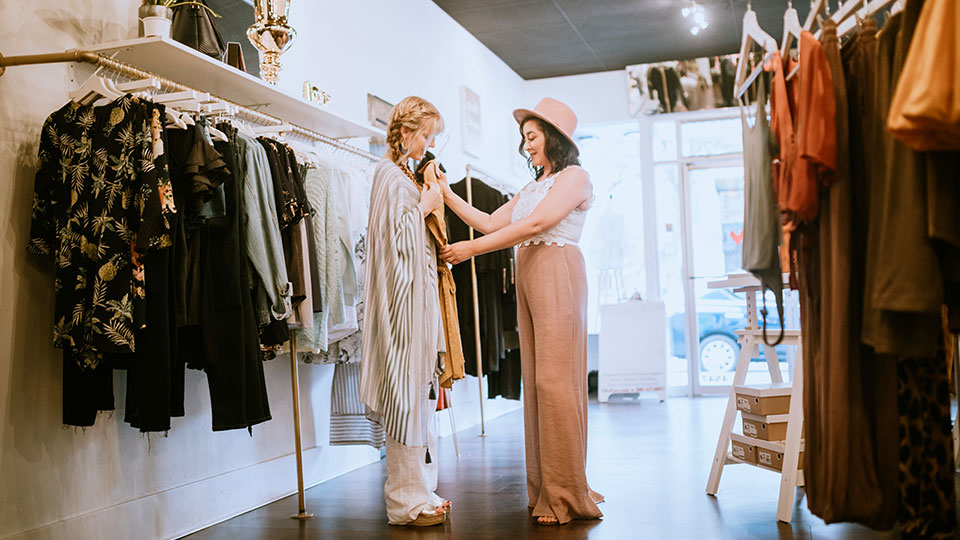In an era where beauty standards are evolving and social media has amplified voices of inclusivity, the average American woman’s body has also transformed. Today, the typical woman in the United States wears a size 16 or 18, a shift that challenges the fashion industry to rethink and adapt its designs. Recent studies reveal that the increase in average body size is more than just a trend—it reflects a significant cultural shift towards body positivity and acceptance.
The Study Behind the Shift in Size

A recent study published in the International Journal of Fashion Design, Technology, and Education surveyed over 5,500 American women. The findings were eye-opening: over the past two decades, the average waist size of women in the U.S. has increased from 34.9 inches to 37.5 inches. Researchers Susan Dunn and Deborah Christel, faculty members at Washington State University, lead this study and emphasize the need for the fashion industry to reflect these changes.
Dunn and Christel’s research sheds light on a growing reality: the fashion industry needs to redefine its idea of “standard” sizing. “Instead of expecting women to fit into something they simply don’t fit into, clothes need to be updated to match the modern American woman,” Dunn explains. This shift in sizing is not just about aesthetics but about promoting inclusivity and self-confidence among women of all body types.
How Social Media is Redefining Beauty Standards
Empowering Women Through Representation
Social media platforms have given everyone a voice, allowing women to celebrate their bodies as they are. Instagram, TikTok, and YouTube have become spaces where beauty is defined by confidence, self-love, and diversity. Influencers, models, and everyday women are sharing their stories, challenging outdated beauty ideals, and embracing their unique shapes and sizes.
Through these platforms, body positivity has flourished. Women can now easily connect with communities that support diversity, which has sparked a broader cultural movement towards embracing natural beauty. The rise of hashtags like #BodyPositivity and #SelfLove highlights how women are redefining beauty standards from within, choosing to celebrate rather than conform.
Influence on the Fashion Industry
Social media’s influence on the fashion industry cannot be understated. As women showcase their bodies with pride, they are sending a clear message to designers: clothing needs to cater to real bodies. The days of fashion houses solely focusing on size 2 models are becoming outdated. Instead, the industry is seeing a shift where plus-size and size-inclusive models are gaining prominence, and major brands are beginning to embrace this shift.
Why Size Inclusivity Matters in Fashion
Rethinking the “Regular” and “Plus-Size” Labels
Historically, the fashion industry has labeled anything above a size 12 as “plus-size.” However, with size 16 now representing the average American woman, it is crucial to question whether these labels are outdated. Size inclusivity is no longer about catering to a niche market; it is about representing a broader demographic that makes up a significant portion of the population.
For many women, finding clothes that fit comfortably and flatter their bodies has always been a struggle. By rethinking sizing standards, the fashion industry can help promote a healthier self-image for women. As Dunn and Christel suggest, “Clothing needs to be updated to mirror the trend of women’s changing sizes.” Fashion brands can play a significant role in empowering women by embracing more inclusive sizing and recognizing that the modern woman’s body can’t be defined by a narrow set of measurements.
Designing for Diverse Body Shapes
The reality is that women’s bodies are incredibly diverse. Many women have curvier hips, fuller busts, or carry their weight differently. Standard sizing often fails to accommodate these variations, resulting in clothes that don’t fit comfortably or flatter the wearer. Fashion brands can address this by offering clothes tailored to different body shapes and sizes, making shopping experiences more inclusive and enjoyable.
The Role of the Fashion Industry in Body Positivity
Moving Beyond Tokenism
For years, many brands have treated plus-size offerings as an afterthought, offering limited styles and poorly constructed garments. However, as the demand for size inclusivity grows, it’s no longer enough to simply have a small section dedicated to “extended sizes.” Brands need to integrate these offerings into their main collections and apply the same attention to detail, style, and quality that they offer in smaller sizes.
More brands are beginning to understand this shift. Companies like Aerie, ASOS, and Universal Standard are examples of brands that have embraced inclusivity by offering sizes ranging from 00 to 40, providing options that cater to a broader range of body types. This inclusivity is essential for the industry to stay relevant and for women to feel represented.
Celebrating All Shapes with Campaigns and Representation
Fashion campaigns have the power to shape perceptions. By including diverse models in their campaigns, brands can showcase that beauty comes in all shapes and sizes. Moreover, representation matters—seeing models who look like you can have a profound impact on self-esteem and body image.
Campaigns like Dove’s “Real Beauty” and the success of Rihanna’s Savage X Fenty line are examples of how brands can celebrate diverse beauty and win the hearts of consumers. When women see models who reflect their own bodies, it fosters a sense of belonging and makes fashion feel accessible to everyone.
How to Encourage Fashion Brands to Embrace Size Inclusivity

1. Demand Variety in Sizing Options
Consumers hold power. By supporting brands that prioritize inclusivity and demanding more options from those that don’t, shoppers can help push the industry forward. Brands listen to consumers, and if the demand for diverse sizing continues to grow, more companies will follow suit.
2. Support Brands that Embrace Diversity
When brands are transparent about their commitment to inclusivity, it is worth acknowledging and supporting their efforts. Follow and purchase from brands that champion diversity, and engage with them on social media to show appreciation for their efforts. Your voice and purchasing power can influence more companies to embrace inclusive sizing.
3. Share and Celebrate Inclusivity on Social Media
Use your platform to celebrate brands, influencers, and individuals who promote body positivity and inclusivity. By sharing content that champions these values, you contribute to a larger movement, encouraging more people to embrace and celebrate their natural bodies.
In Conclusion: Fashion for Every Woman
The changing size of the average American woman signifies more than just a trend—it’s a reflection of cultural progress towards inclusivity, body positivity, and self-acceptance. As the fashion industry adapts to this evolving landscape, it has the opportunity to redefine beauty standards, celebrate diversity, and offer clothes that fit and flatter women of all sizes.
By embracing size inclusivity and moving beyond outdated labels, the fashion industry can play a powerful role in fostering a culture of confidence and self-love. So, let’s support the brands that are making these changes and encourage others to do the same, creating a future where every woman can feel stylish, confident, and represented.


